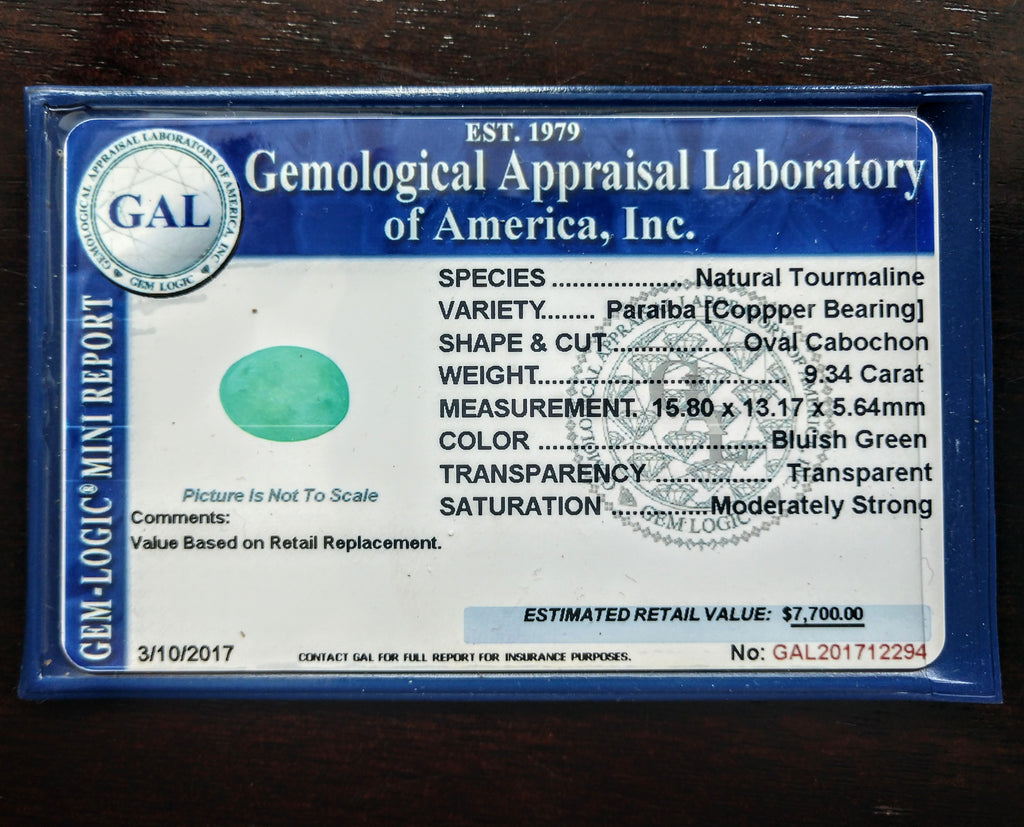Gem Lab Reports: Some FAQs

As you’ve probably noticed, Cecile Raley Designs provides certificates with certain gems, or we offer to provide one upon request. With more and more requests for certificates coming in, it’s time to review what these reports do for you and when you should get them.
Gem Identification: This is probably the single most important thing a lab report can do for you. A gem ID provides you with certainty that the gem you bought is what you thought it was. It tells you that the gem is not synthetic or lab grown.
Specifications: A lab report also gives you the details about the gem, its shape, weight, cut, measurements, color, and variety (i.e. the sapphire variety of corundum).
Treatment: Not all treatments are mentioned in a lab report, or need to be. Whether treatments are mentioned depends entirely on the gem and this can get complicated very quickly. Basic treatment, i.e. heat treatment of a sapphire, must be disclosed. But this is not the case for an aquamarine or a tourmaline. Why? In part this is because it cannot actually be determined if an aqua or tourmaline is heated. The heating process does not leave any trace on these gems. Treatment is also disclosed if it can affect the value. So, for instance, if a ruby is glass filled it has little to no value and if it is totally untreated it has high value. Note, however, that to detect different treatments, different techniques are needed. Heat, glass fill, or surface enhancements like oil can be detectable under the microscope but it’s not possible to detect if borox was used in diffusion treatment.
Origin: Origin in gems is often very hard to determine and it is not always certain. Only fairly broad origin regions can be determined, not the actual mine or town where a gem came from, and for different gems different methods are needed. Essentially one determines origin by identifying other trace minerals in the gems and locating its origin. Alternatively, as with Russian demantoid, the types of inclusions can be a tell-tale sign of the origin. With some gems, diamonds for example, origin cannot be determined at all. We only know that certain colors, such as pink, mostly originate from a specific location, Australia in this case. And diamonds come from just about everywhere! By contrast, other gems (like grandidierite and kornerupine) have only one known origin. It is also important to point out that gems under 3mm in size cannot be tested for origin (AGL won’t provide any reports for them at all). These stones are too small to yield useful readouts, or to have any identifying inclusions.

Value: Most labs do not provide a value of the gem on their report. Gem values constantly fluctuate so there’s no point in trying to nail it down. Only appraisal labs, such as GAL, give you a value. GIA, AGL and EGL do not. The point of providing a value is to give an insurance company something to go by in case the gem is lost or stolen. It’s not really to show the client that they got a good deal (or a bad one, for that matter). And how is the value determined? Gem labs find out the value by referencing quarterly price tables that list approximate values. These values, in turn, are based on reported sales. Price lists are only available for the most common stones. For uncommon materials, the lab has to do research, i.e. looking at comparable gems on the internet or calling other labs and asking them if they have recently seen or valued a gem of that type.

2013 Rapaport Diamond Report. You can find more information here: http://www.diamonds.net/Prices/RapaportPriceGuide.aspx
Sometimes, there’s no comparison base at all. Cobalt spinel, grandidierite, benitoite and kornerupine are just some gems that have no prices available for comparison.
What does a lab report cost? The cheapest report I know of is the GAL mini cert which costs about $40 retail, and $80 for the full report. The AGL gem brief is $70 for smaller stones, and a prestige report with origin is $220. And if you have a gem pair each gem costs separately. AGL won’t put both on one report. GIA starts at $160. AGL and GIA have a turnaround period of 3-4 weeks, GAL is faster – at least for me they are because I give them a lot of my stuff.
And now for the most important question: Should you get a report at all? I would say no if your gem cost you less than $500. We US sellers are bound by law to provide you with the merchandise we advertise so if anything is not as promised we have to take it back, and if fraud is suspected, we are in trouble. Plus, lab reports can increase the asking price for a gem because the time and money of the report will now figure into the price. This is especially true for AGL and GIA reports.
That said, when you buy a diamond, it should pretty much always be certified, at least if it is more than half a carat. This is for a different reason, however. Diamonds are easy to identify, so you don’t need the report for that (you can get a diamond tester instead, or hold it to a flame if you suspect it’s moissanite – it will change color). But because diamonds are expensive, a report, and in particular a GIA report, which is a very strict grading, provides you with assurance that you are paying the correct price. While diamonds are not traded on the commodities exchange, they do have fairly fixed values, determined by the Rapaport diamond sheet.
